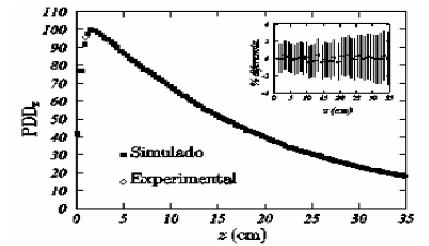Monte Carlo Study of the Clinical Accelerator Elekta SL 5735 for Stereotactic Radiosurgery
Abstract
Stereotactic radiosurgery is used for the treatment of small brain lesions. In linear accelerator-based radiosurgery, the photon beam produced in the accelerator head is collimated with a micro-multi-leaves collimator. The linear accelerator of the radiotherapy department of the INOR was simulated with the Monte Carlo code Penelope, with the aim of develop a precise method for the verification of the treatment planes. The most influential variables were studied first, such as distribution and energy of the incident electron beam in the target, and the composition of the flattening filter, based upon the information supplied by the manufacturer. The code parameters are optimized, comparing it with the BEAM code and using variance reduction techniques. The results obtained in the simulation for the depth dose percent curve and the profiles differ from the experimentally measured in less than 4 %, with an uncertainty (3σ) of 4 %. It is possible to continue simulating the tertiary collimation system with the phase space obtained.

This work is licensed under the Creative Commons Attribution-NonCommercial 4.0 International (CC BY-NC 4.0) license.








